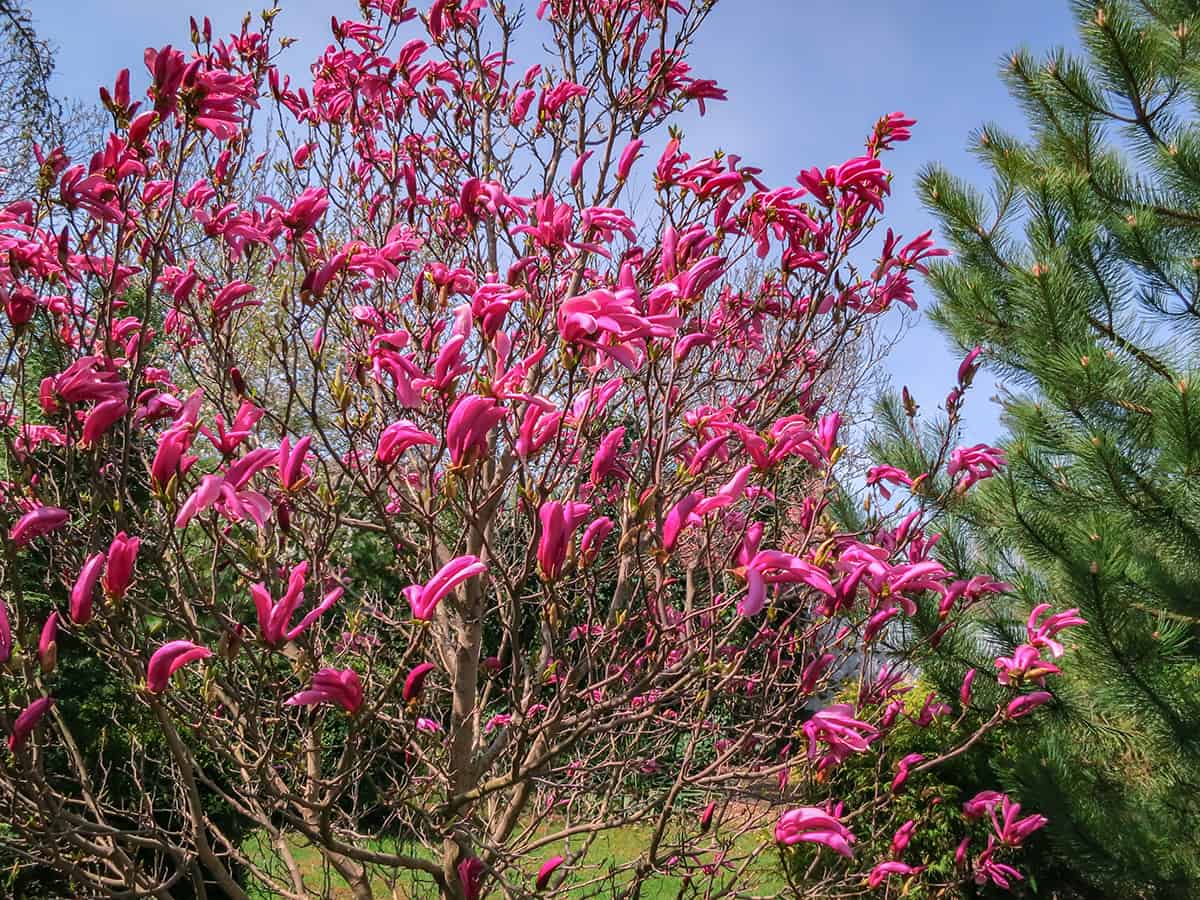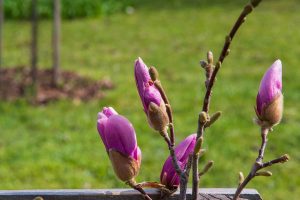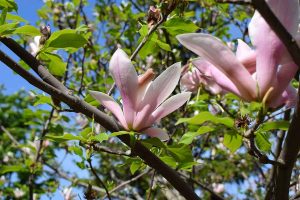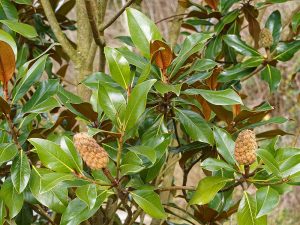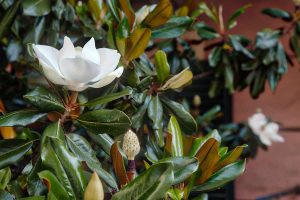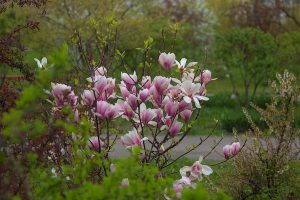When most of us think of magnolias, we imagine the huge trees with stunning white, waxy blooms that are iconic in the southern United States. Fortunately for those of us with more compact backyards and gardens, there are a number of dwarf magnolia species that will not exceed 15 feet at maturity.
Many of these can be grown as either shrubs or trees, and make excellent additions to smaller spaces. What most magnolia plants have in common is their ability to bloom early with magnificent, large flowers, bringing a much-needed splash of color to the early spring garden.
Here we look at the best dwarf magnolia tree varieties.
Table of Contents
Magnolia ‘Ann’
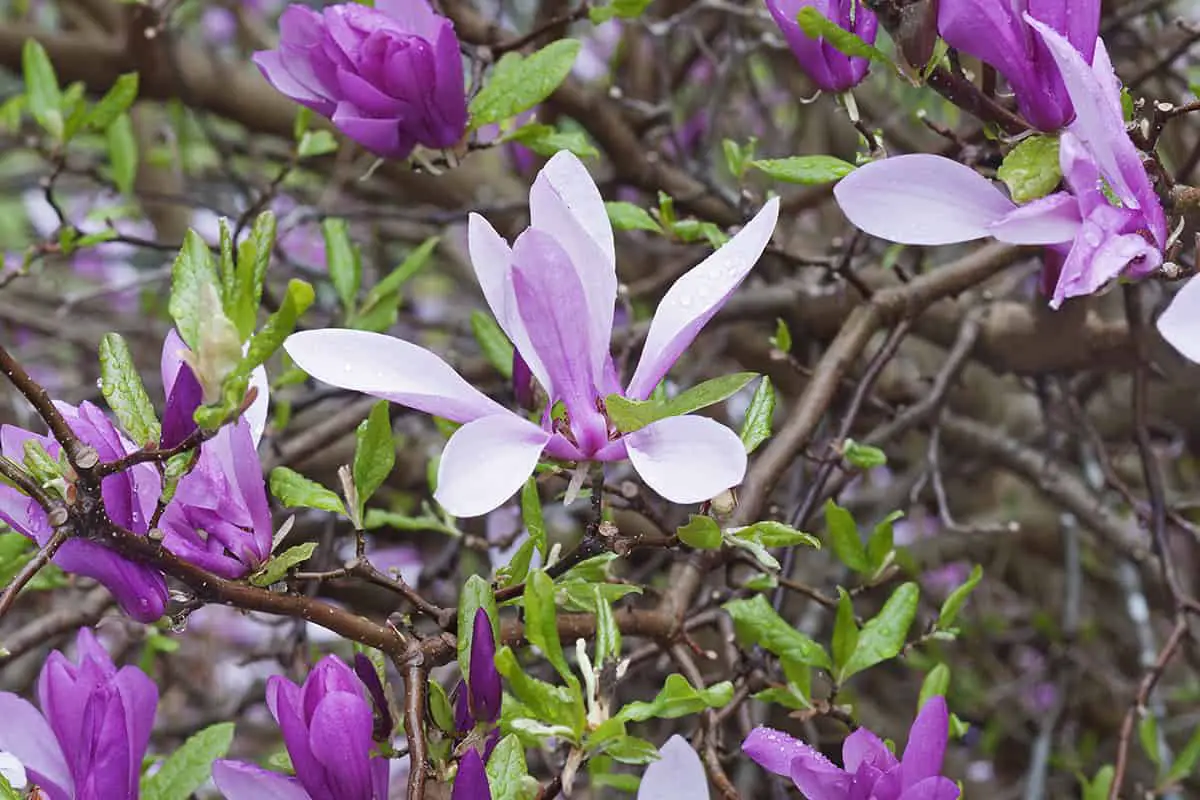
This dwarf variety of magnolia can be grown as a deciduous shrub or a tree, and is a hybrid which resulted from crossing the Lily Magnolia ‘Nigra’ with the Star Magnolia ‘Rosea’. It is one of the smallest types of magnolia plant you can get, growing to eventual heights of between 8 and 10 feet tall, with a spread of equal size.
This is a slow-growing variety, which can take as long as 15 years to reach its expected size, making it ideal for compact gardens or growing in a pot. The flowers on this plant are large compared to the plant itself, at 4 inches across. They are dark pink on the outside, and pale pink on the inside.
Flowers arrive before the leaves unfurl, bringing early spring color to the garden, and creating an interesting visual impact. The green leaves are medium in size, fading to yellow and shedding in the fall.
Magnolia ‘Genie’
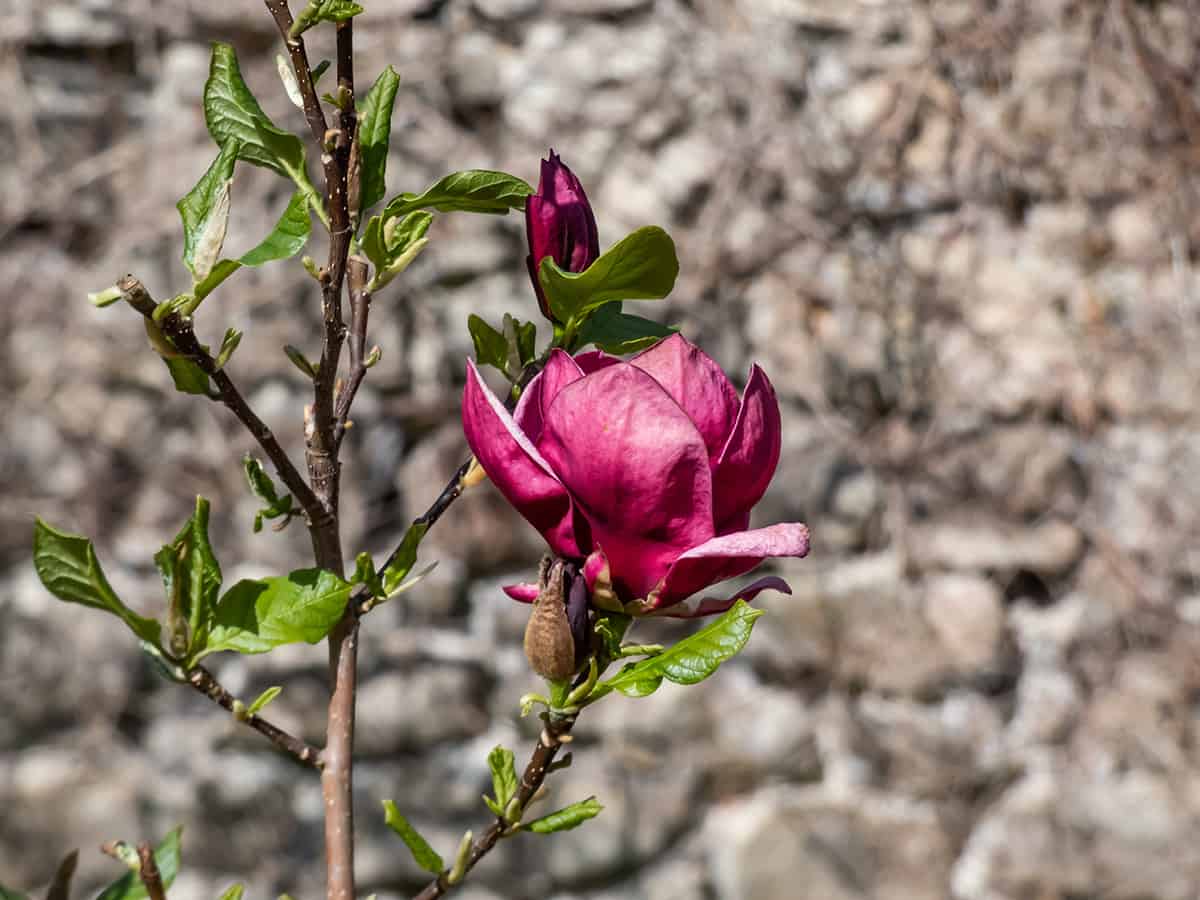
This is a dramatic and elegant variety of magnolia, which grows to the compact size of just 10 to 13 feet in height, with a spread of between 5 and 6 feet.
As the spread is significantly less than the height, this is a good specimen to use when ground space is tight. The beauty of this plant lies in the flowers, which arrive as silky black buds on bare branches. They develop into deep maroon-colored blooms which are fairly large at 6 inches across and resemble tulips. This magnolia blooms heavily in spring, but it can continue to bloom throughout summer if the conditions are ideal.
Magnolia ‘Pinkie’
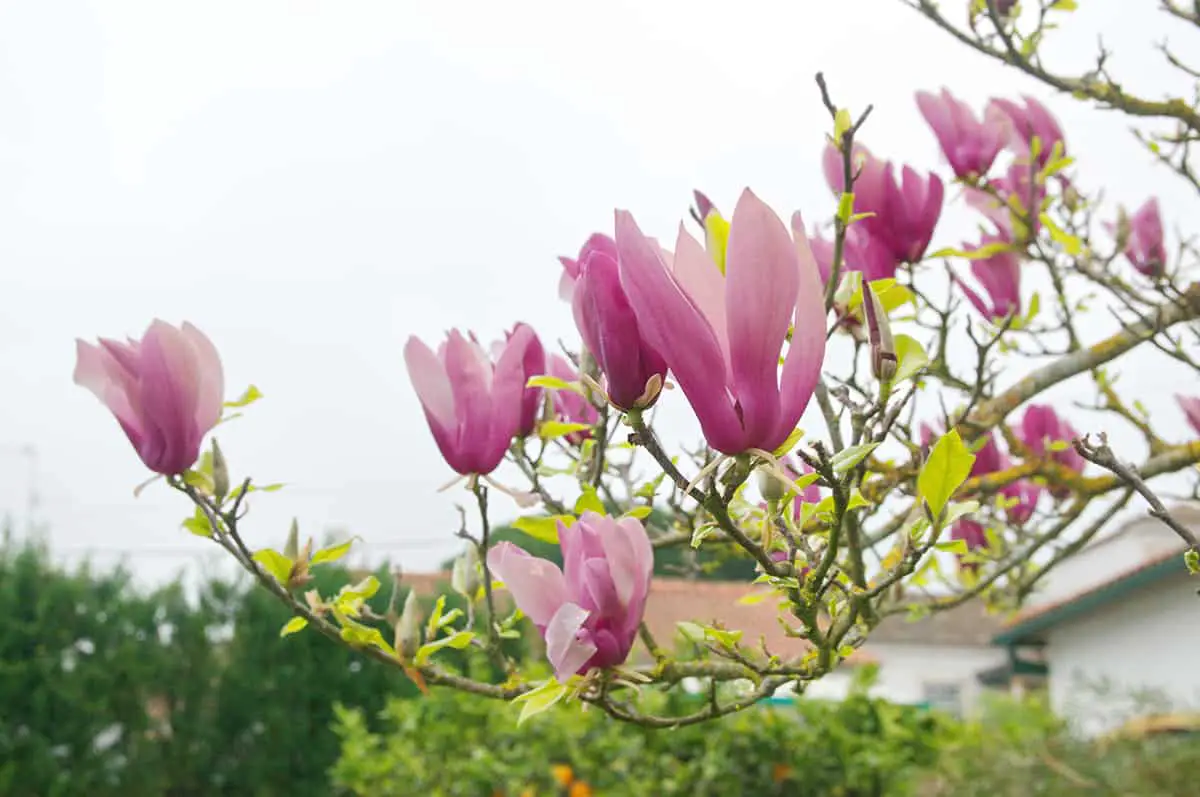
This is another hybrid variety that is the result of a cross between Lily Magnolia ‘Nigra’ and the Star Magnolia ‘Rosea’. It can be a large shrub or small tree, at a height of between 10 and 15 feet, and a spread of 8 to 12 feet.
This magnolia produces an abundance of flowers which are huge in proportion to the plant, typically measuring between 7 and 8 inches in diameter. They arrive in mid to late spring, which means the flowers remain unaffected by late frosts in cooler climates. The blooms are pink on the outside and white on the inside, taking the shape of a fluted cup.
Magnolia ‘Star Wars’
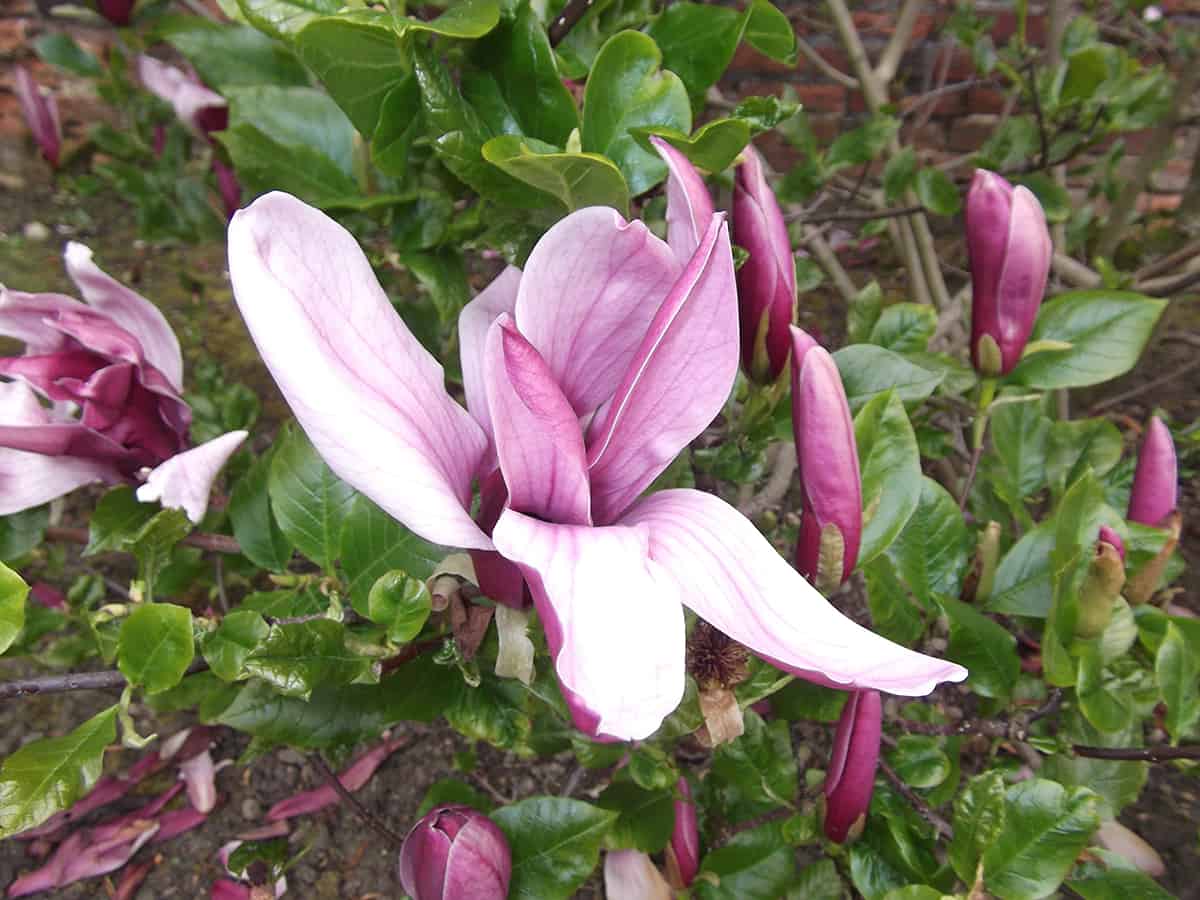
This dwarf variety is a hybrid of Campbell’s Magnolia (Magnolia campbellii) and Lily Magnolia (Magnolia liliiflora). It grows to between 10 to 15 feet in height and 6 to 20 feet wide, in the form of a tree or spreading shrub. This plant is a prolific bloomer, producing huge amounts of massive flowers spanning 11 inches across.
The blooms are a candy pink color, and darker on the outside compared with the inside. The flowers open up in spring before the leaves begin to unfurl on the branches, and they continue to bloom throughout summer. In ideal conditions, the plant will bloom for a second time each year in the fall. This plant has gained the Award of Garden Merit from the Royal Horticultural Society.
Magnolia ‘Susan’
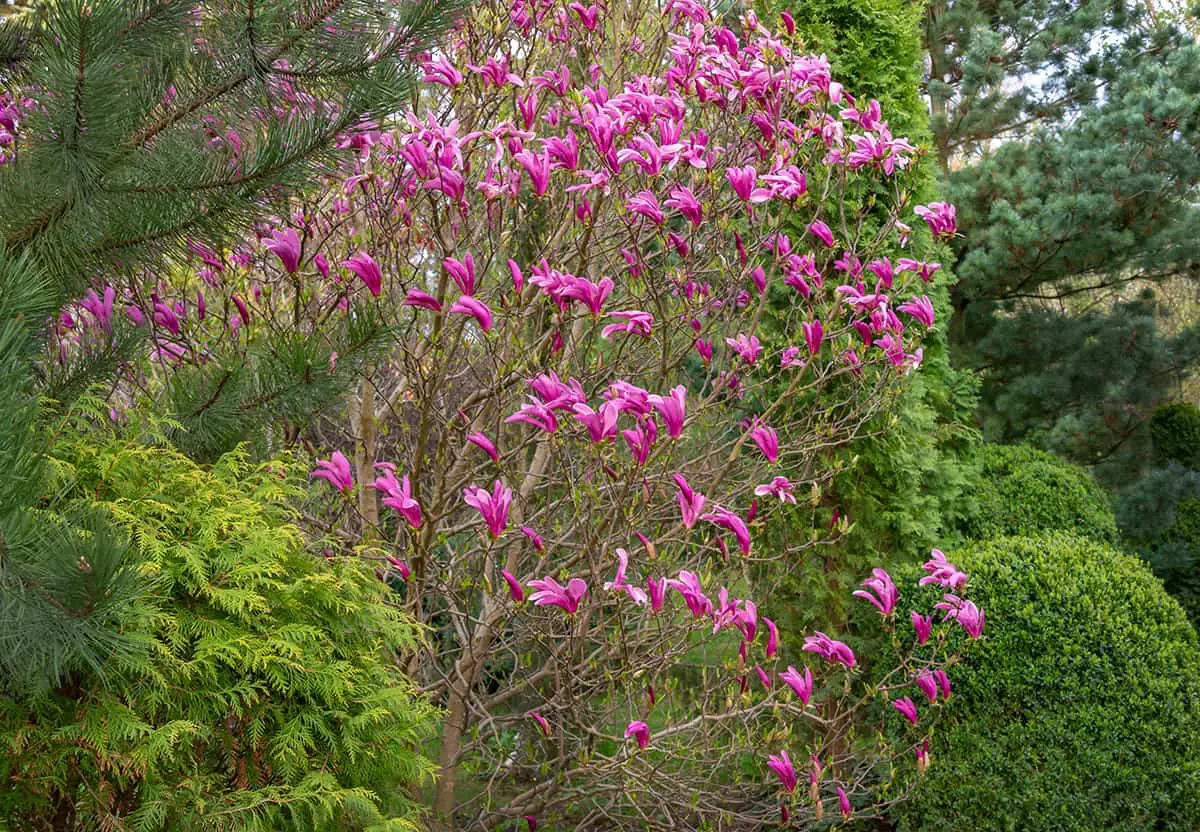
This dwarf magnolia is another hybrid resulting from the crossing of the Lily Magnolia ‘Nigra’ and the Star Magnolia ‘Rosea’. It is very compact for a magnolia, at a total mature height of between 8 and 12 feet, with a similar-sized spread.
This is an exceptionally hardy magnolia, suitable for growing in USDA hardiness zones 4 to 8. It produces purple flowers in late spring which are around 5 inches in diameter and shaped like goblets. As a late bloomer, the flowers on this dwarf magnolia will be spared from late frosts in cold regions.
Saucer Magnolia ‘Lilliputian’
Botanically known as Magnolia x soulangeana ‘Lilliputian’, this plant is one of the smallest of all the varieties of Saucer Magnolia. It is ideal for planting in compact gardens, or it can also grow well in a container. With a height of between 10 and 12 feet, and a spread of between 6 and 8 feet, this plant can be grown as a shrub or a tree. It produces delicate-looking flowers in pale pink and white, which have a slight citrus scent. Flowers bloom on bare branches before the leaves unfurl several weeks later. Foliage on this dwarf magnolia is a shade of gray-green, and will drop from the tree in fall.
Yulan Magnolia ‘Yellow River’
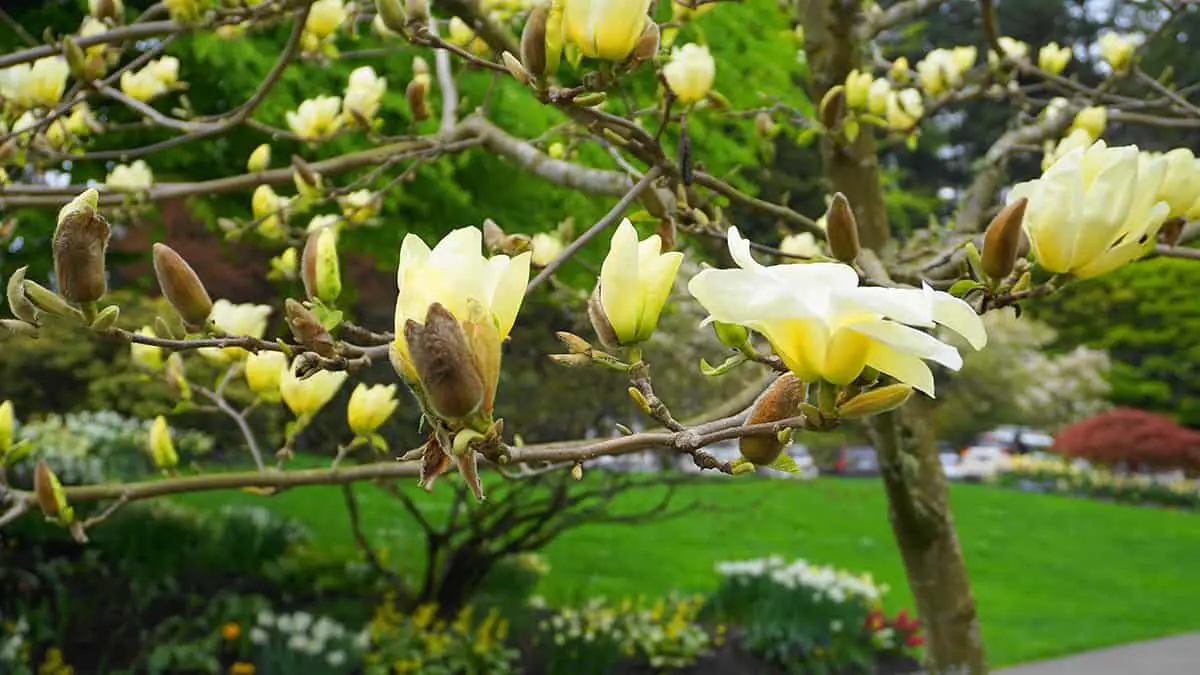
The botanical name for the Yellow River Yulan Magnolia is Magnolia denudata ‘Yellow River’, though it is also sometimes referred to as ‘Fei Huang’. This is a small tree that reaches between 10 and 15 feet in height, with a spread to match. It produces fruit-scented, elegant yellow flowers which are cream at the tips.
They are held in an upright position, spanning 6 inches in length. This is a late bloomer compared to many other magnolias, with flowering occurring at the end of spring just before the leaves unfurl. Foliage is green and ovate, and as a deciduous tree, the leaves will drop in the fall.
Lily Magnolia ‘Nigra’
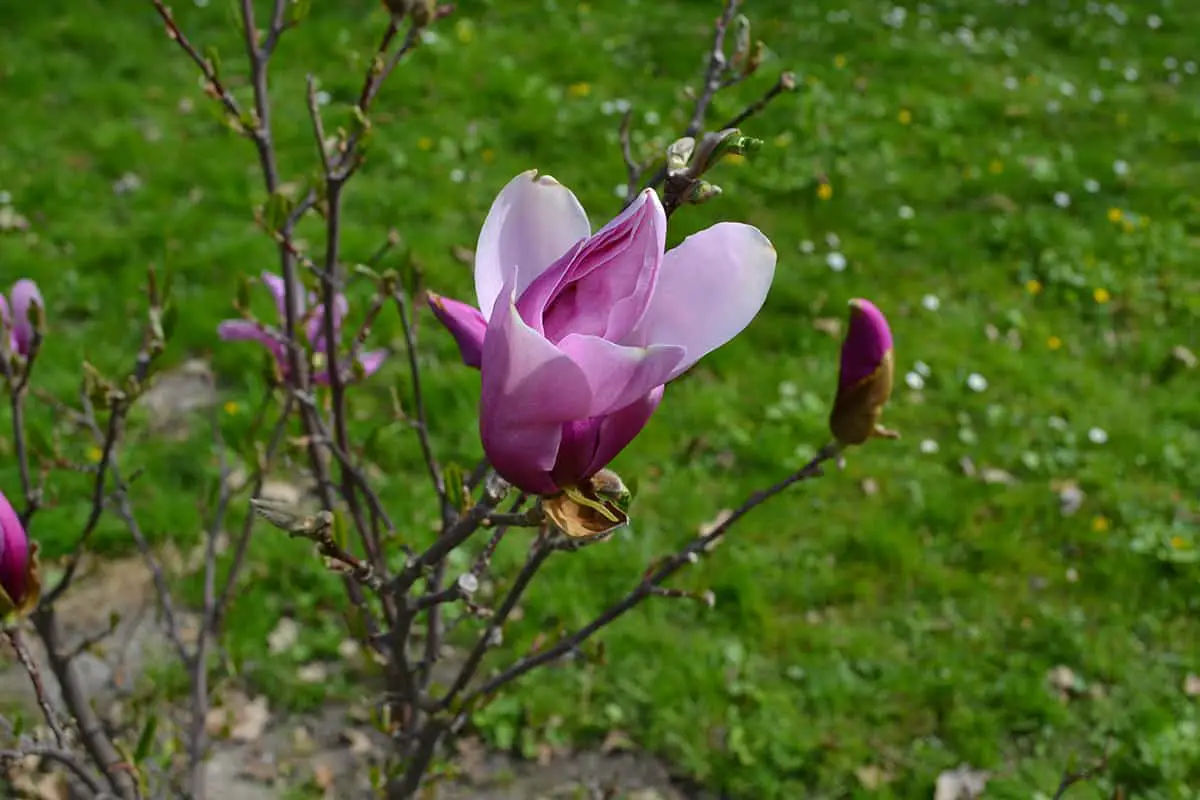
This is an award-winning dwarf variety of magnolia, botanically known as Magnolia liliiflora ‘Nigra’. It was first introduced in Japan in the mid-19th century and makes an excellent specimen plant in compact gardens. It can be grown as a spreading shrub with an eventual height of between 8 and 12 feet, with a spread of equal size.
The plant can also be grown as a tree, which will have a naturally rounded crown. The flowers of this plant resemble lilies, hence the common name, and they bloom throughout spring but are also capable of continuing to flower during summer. The flowers are purple on the outside, and pale lilac on the inside. They stand upright on the branches, measuring around 5 inches long.
The foliage of the plant is a deep shade of green, with a slight sheen. Flowers emerge before the leaves unfurl, and can be damaged by late frosts. This is one of the more hardy varieties of magnolia, being suitable for growing in USDA hardiness zones 5 through to 9.
Oyama Magnolia
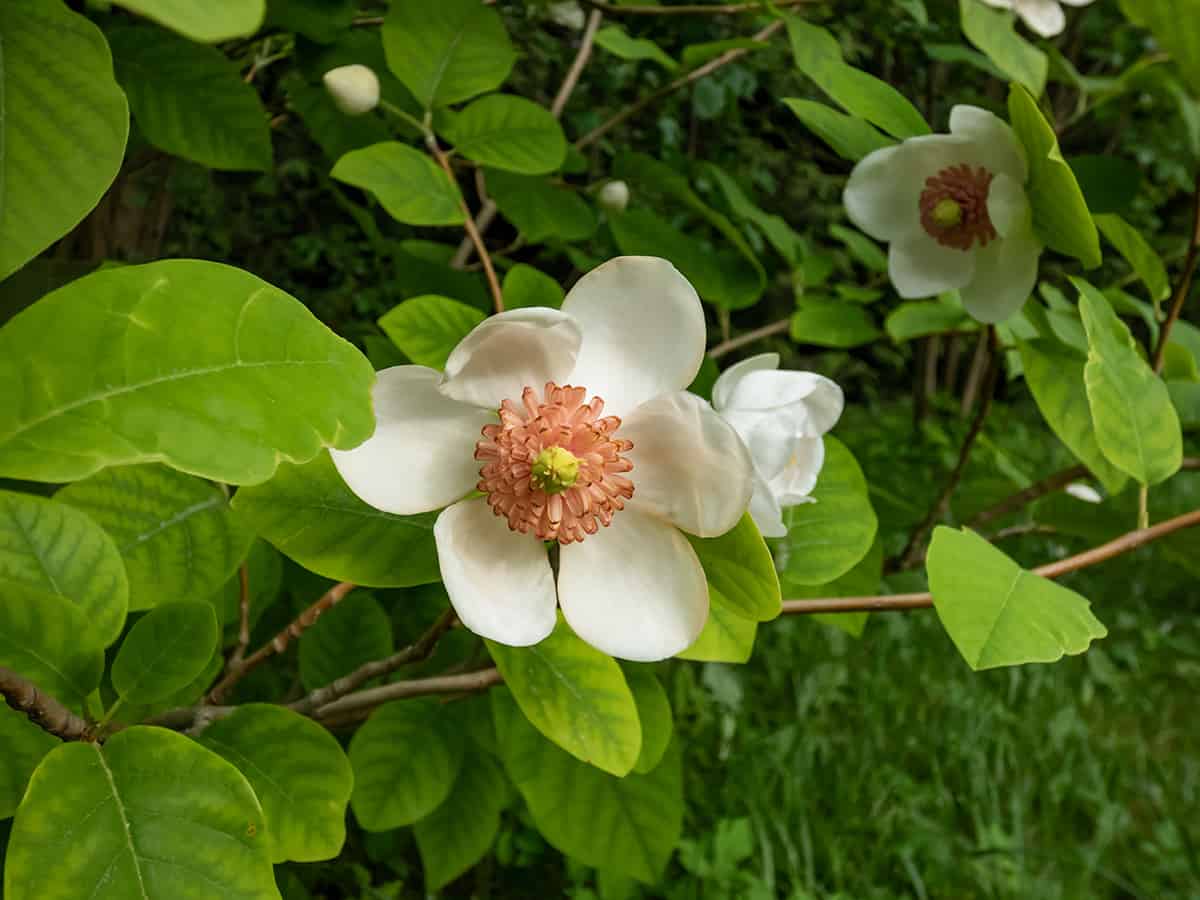
This magnolia can be grown as a tree or shrub, reaching typical heights of between 10 and 15 feet. The spread on the mature tree will match the height. This is an ideal dwarf magnolia for a darker corner of a small garden because it prefers to grow in partial shade since it is sheltered from the sun by taller trees in its natural habitat.
The tree is native to Korea, Japan, and China, and also goes by the name of the Korean Mountain Magnolia. The plant produces elegant white flowers which start out as egg-shaped buds before opening out into cup-shapes. They are delicately fragranced and have bold red stamens which stand out against the backdrop of the white petals. This plant blooms in late spring or early summer, typically at the same time as leaves are unfurling.
After flowering, the blooms develop into bright pink seed pods which create interest in the plant, which will split open to reveal vibrant red or orange seeds. The foliage of this magnolia is a fresh green color, and each leaf is quite large at 5 or 6 inches in length. In fall, the leaves fade to yellow before dropping to the ground.
This is not a particularly hardy variety of dwarf magnolia and can be grown outside in USDA hardiness zones 6 through to 9. The small size of the plant makes it well suited for growing in a pot, which could be kept outdoors in summer and taken into a garage to over-winter in cooler climates.
Star Magnolia ‘Jane Platt’
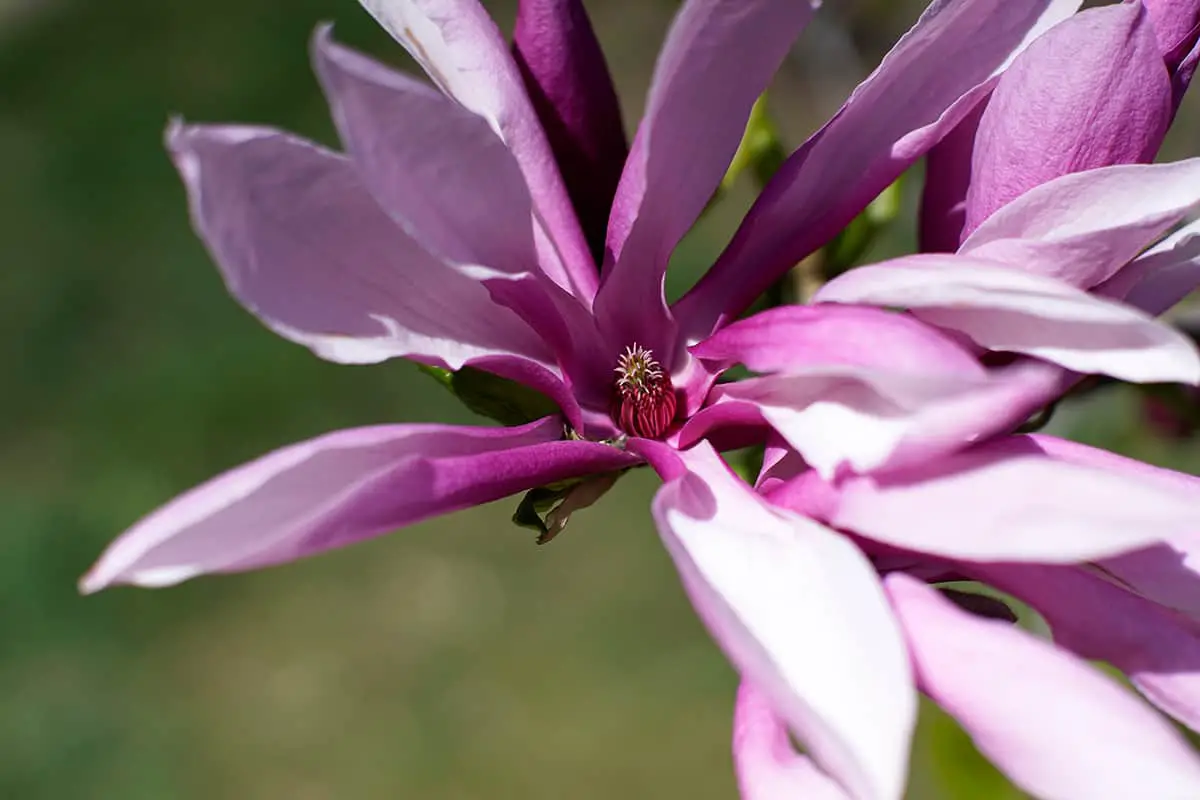
This dwarf magnolia takes the shape of a pyramidal shrub, with a mature height of 10 to 15 feet and a mature spread of between 8 and 12 feet. It is an award-winning variety, which is considered to be one of the best types of pink magnolia.
The plant flowers in early spring or mid-spring, with elaborate, sugar-pink double blooms which can have as many as 32 petals each. The flowers will measure around 4 inches across, have an appealing scent, and will arrive on bare branches before the foliage emerges.
This is a remarkably hardy variety of magnolia, being suitable for growing in USDA hardiness zones 4 to 8. As the flowers will bloom early in the season, they may sustain damage from late frosts.
